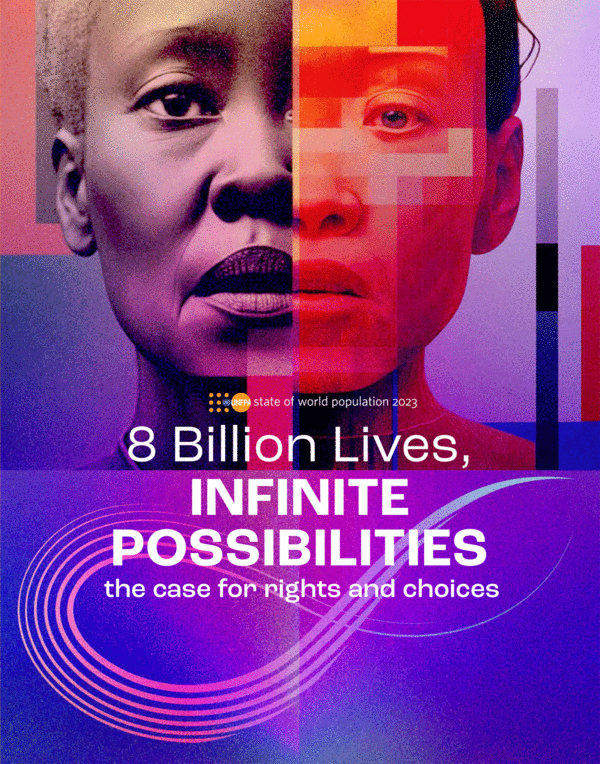- Share this article
- Subscribe to our newsletter
State of World Population Report 2023 – backing the right to self-determination
In November 2022, the United Nations announced that the human population had surpassed eight billion people, and also that two thirds of people were living in places where fertility rates had fallen below the so-called replacement level of 2.1 births per woman.
These trends offer a nuanced look at demographic transition — the shift from higher to lower mortality and fertility — as it unfolds in different countries and contexts. But the subtleties of this story were very often lost. “Too many” people would overwhelm the planet, many pundits proclaimed, even as others warned that “too few” people would lead to civilisational collapse.
With its State of World Population Report, this year entitled 8 billion lives, infinite possibilities: the case for rights and choices, the United Nations sexual and reproductive health agency UNFPA calls for a radical rethink of how population numbers are framed – urging politicians and media to abandon overblown narratives about population booms and busts. Instead of asking how fast people are reproducing, leaders should ask whether individuals, especially women, are able to freely make their own reproductive choices – a question whose answer, all too often, is no.
According to the report, 44 per cent of partnered women and girls in 68 reporting countries do not have the right to make informed decisions about their bodies when it comes to having sex, using contraception and seeking healthcare – as measured by Sustainable Development Goal indicator 5.6.1– and an estimated 257 million women world-wide have an unmet need for safe, reliable contraception.
At the same time, many countries have rolled out programmes to engineer larger families by offering financial incentives and rewards to women and their partners, yet they continue to see birth rates below two children per woman. On the other hand, efforts to slow population growth through forced sterilisation and coercive contraception have grossly violated human rights.
Family planning must not be used as a tool for achieving fertility targets, the report maintains; it is a tool for empowering individuals. Women should be able to choose if, when and how many children they would like to have, free from the coercion of pundits and officials.
Some key facts and figures from the report:
- A survey of eight countries showed people who had been exposed to media or conversations about the world’s population were more likely to view it as being too high.
- Global demographics are changing rapidly. Two thirds of the global population are living in low fertility contexts, while eight countries will account for half the projected growth world-wide by 2050 (the Democratic Republic of the Congo, Egypt, Ethiopia, India, Nigeria, Pakistan, the Philippines and the United Republic of Tanzania).
- Blaming fertility for climate change will not hold the greatest carbon emitters to account. Out of 8 billion people, around 5.5 billion do not make enough money, about 10 US dollars a day, to contribute significantly to carbon emissions.
- A recent UN study says greater gender parity in the labour force would do more to sustain economies in ageing, low-fertility societies than setting targets for women to have more children.
The report strongly recommends that governments institute policies with gender equality and rights at their heart, such as parental leave programmes, child tax credits, policies that promote gender equality in the workplace, and universal access to sexual and reproductive health and rights. These offer a proven formula that will reap economic dividends and lead to resilient societies able to thrive no matter how populations change.
The State of World Population Report is published yearly since 1978. This year’s report includes contributions from two UN partners: the International Organization for Migration and the Population Division of the Department of Economic and Social Affairs.
(UNFPA/sri)
More information:





Add a comment
Be the First to Comment